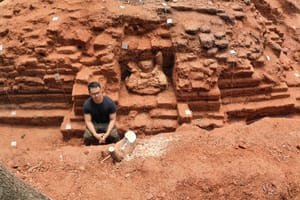LONG BEFORE THE Sultanate of Melaka, there was Ancient Kedah—a patchwork of coastal and riverine polities located along the northwestern coast of the Malay Peninsula. From as early as the 2nd century CE, the region began to participate in the expanding trans-Asian trade network that connected major economic and cultural centres in India, the Middle East, China and Southeast Asia. This connectivity formed an integrated network of port-polities, which facilitated not only the exchange of goods, but also the movement of people, ideas and religious traditions. Over time, these interactions contributed to the emergence of increasingly complex socio-political structures and cultural landscapes across the region.
By the 5th or 6th century CE, the Bujang Valley had evolved into the principal economic and population centre of Ancient Kedah, playing a pivotal role in mediating maritime trade and fostering regional cosmopolitanism. Nestled in the foot of Gunung Jerai and the riverine plains of the Merbok River, the Bujang Valley is widely regarded as the cradle of early civilisation in the Malay Peninsula.
Often overshadowed by the grandeur of Angkor or Borobudur, this archaeological landscape holds immense significance due to its diverse assemblages, unique art forms and advanced technological achievements. From the early centuries of the Common Era, the Bujang Valley flourished as a vibrant hub within an extensive maritime trade network that connected India, China and the Middle East. The economic prowess and cultural sophistication of Ancient Kedah remain evident in Bujang Valley’s archaeological remains, which include Hindu-Buddhist sites, tradewares, iron-smelting sites as well as beads and ornaments. These discoveries span 184 archaeological sites across the area of Bukit Choras, the Merbok-Muda River valley and Cherok Tok Kun.





